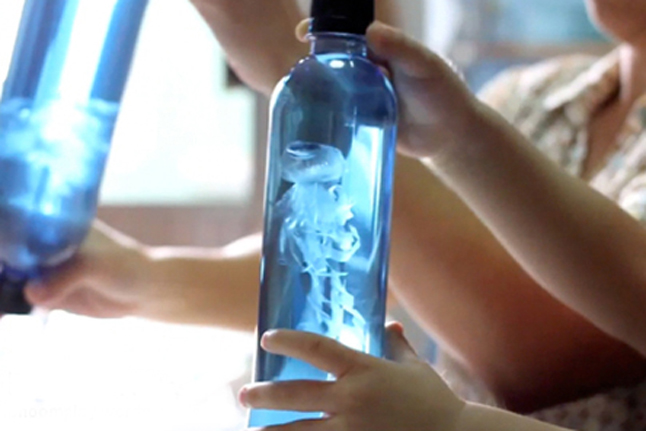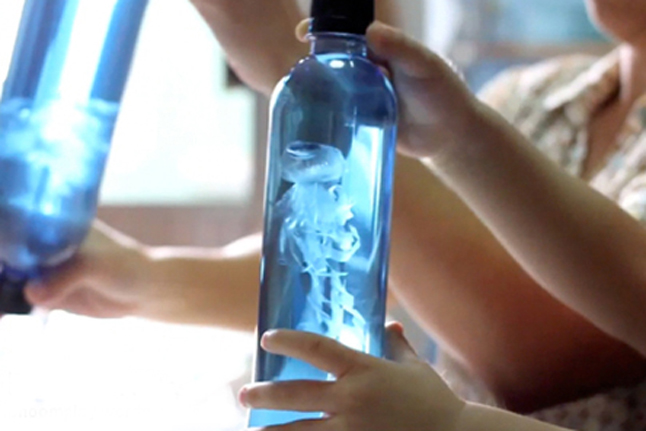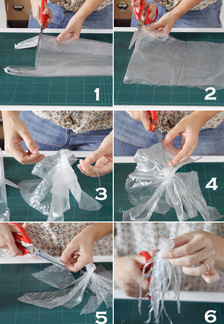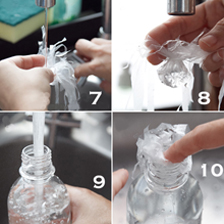

My son, Bhoom, has recently become interested in shaking things in water bottles. The other day, I was searching for something to put in a water bottle for him to shake for fun. I saw a plastic grocery bag lying around (as I’m sure you have in your home!) and thought of this idea.
After a few trials (and of course a few errors), the little jellyfish came to life! When Bhoom first saw it, his jaw dropped to the ground. Hopefully your child will enjoy this project as much as mine did.
Materials:
- plastic grocery bag
- water bottle
- thread or string
- food coloring
- scissors
Instructions
 Flatten the bag and cut off the handle and the bottom part (see picture 1).
Flatten the bag and cut off the handle and the bottom part (see picture 1).- Cut along both sides (see picture 2) to split into two plastic sheets (we only used one of them.)
- From the center of the plastic sheet, fold it like a tiny balloon to make the head part and tie it with the thread—not too tight (see picture 3). You must leave a little hole in order to pour some water into the head part (see pictures 7-8).
- Once you’ve secured the head, the remaining plastic will be the jellyfish’s tentacles. Cut from the edge up to the head, roughly, to make about eight to ten tentacles (see picture 4).
- For each tentacle, cut again into three or four small strings (see picture 5) and cut off the remaining part.
 Trim to make random long and short tentacles (see picture 6). When finished, you’ll get something like this (the pile on the left is all the spare pieces we cut off).
Trim to make random long and short tentacles (see picture 6). When finished, you’ll get something like this (the pile on the left is all the spare pieces we cut off). - Put some water into the head part so that it can sink, but leave some air inside to allow it to float.
- Fill up your water bottle. Then put your jellyfish in the bottle, along with a few drops of blue food coloring. Screw on the cap and shake lightly.
Then your jellyfish craft is finished. Don’t forget to make sure the cap is properly closed and tight before you give it to children! Encourage your kids
 to turn it upside down—they’ll be surprised to see it move every time they turn the bottle. Bhoom spent some time trying to confuse the jellyfish by turning the bottle back and forth very fast.
to turn it upside down—they’ll be surprised to see it move every time they turn the bottle. Bhoom spent some time trying to confuse the jellyfish by turning the bottle back and forth very fast.Young kids like Bhoom will exercise their hand and arm muscles whenever they flip, rotate or turn the bottle. They can also learn about the relationship between the direction of the bottle and the movement of the jellyfish. For older kids, you can ask them questions about why the jellyfish always floats up to the water surface and discuss the differences between a real jellyfish and the one in the bottle.
SOURCE:http://www.pbs.org/parents/crafts-for-kids/jellyfish-craft/